blog
We don’t believe in waste of any kind, not just resources, but also time, energy, ideas or money. Life is short; we don’t want to waste it. Here you can delve deeper into the work with do with our customers by reading our binit blogs.
We don’t believe in waste of any kind, not just resources, but also time, energy, ideas or money. Life is short; we don’t want to waste it. Here you can delve deeper into the work with do with our customers by reading our binit blogs.
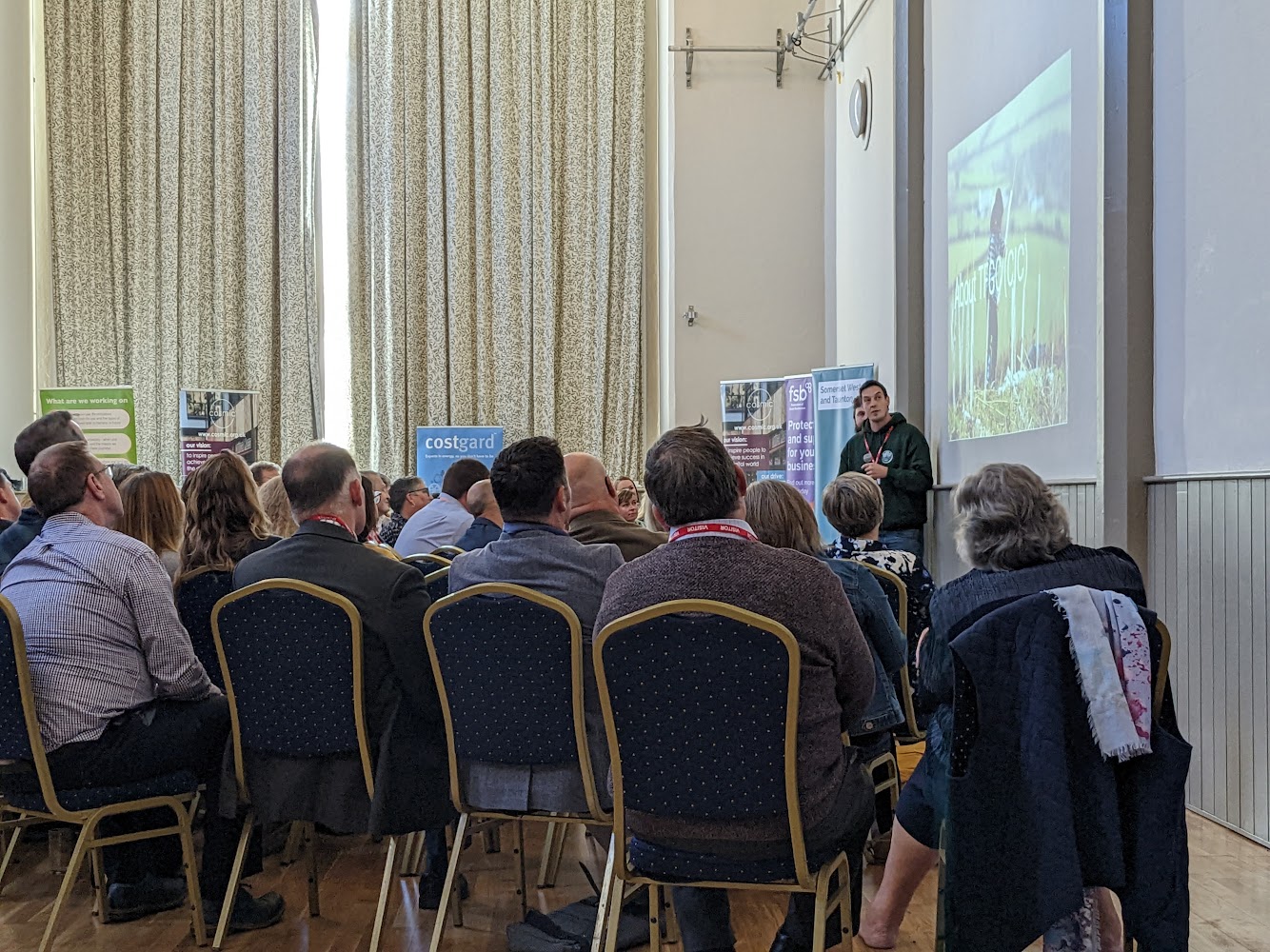
Binit were pleased to be invited to exhibit and attend the second Somerset Business Climate Summit on 21st September 2022. We heard from brilliant businesses; The Field Works, South West Manufacturing Advisory Service (SWMAS) ,Thatcher’s Cider, New Leaf Design, My Carbon Coach and Trees for Good Causes. The event was positive and uplifting as businesses shared with each other methods of best practice and encouragement of how we can help each other towards achieving our Net Zero journey.

Here our takeaways:
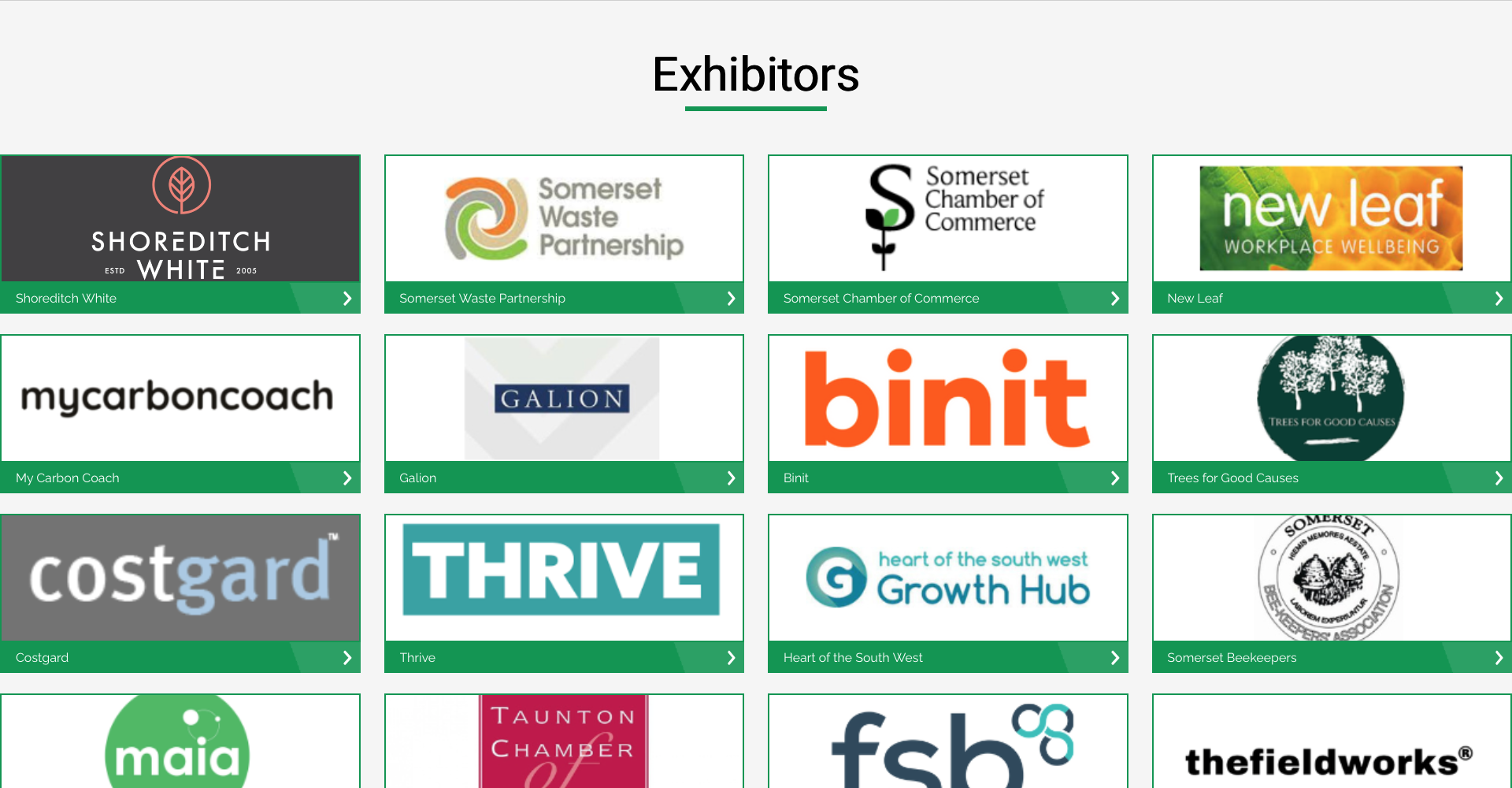
We will next be exhibiting and speaking at Exeter Science Park’s First Net Zero Carbon Conference, Thursday 29th September 2022 from 8 a.m. – 4:30 p.m. We hope to see you there!

Today is the International Day for the Preservation of the Ozone Layer. The ozone layer is a layer of gas that protects the Earth from harmful radiation from the Sun by absorbing up to 98% of all harmful ultraviolet rays. The ozone also regulates the temperature of the Earth, keeping our planet from overheating or freezing. It wasn’t until the late 1970s when scientists discovered that human activity was contributing to the destruction of the ozone layer. A hole in the ozone layer was caused by ozone-depleting gases, found in air conditioners, refrigerators and freezers. This depletion has caused, for example, the destruction of ecosystems, and increased the risk of skin cancer in humans.
In 1994, the United Nations declared 16th September as the International Day for the Preservation of the Ozone Layer and since then, countries all over the world have been trying to eliminate 99% of all ozone-depleting substances. If all goes according to plan, the Earth could restore the ozone layer to its 1980s level by 2050. We can achieve this by getting our electronic appliances serviced routinely, discarding old appliances that could be emitting ozone-depleting gases, swapping unnecessary vehicle use with walks and bicycles and sharing lifts with co-workers and friends.
Information from <https://nationaltoday.com/international-day-for-the-preservation-of-the-ozone-layer/>
Turn those pesky plastic bottles into planters in five simple steps!
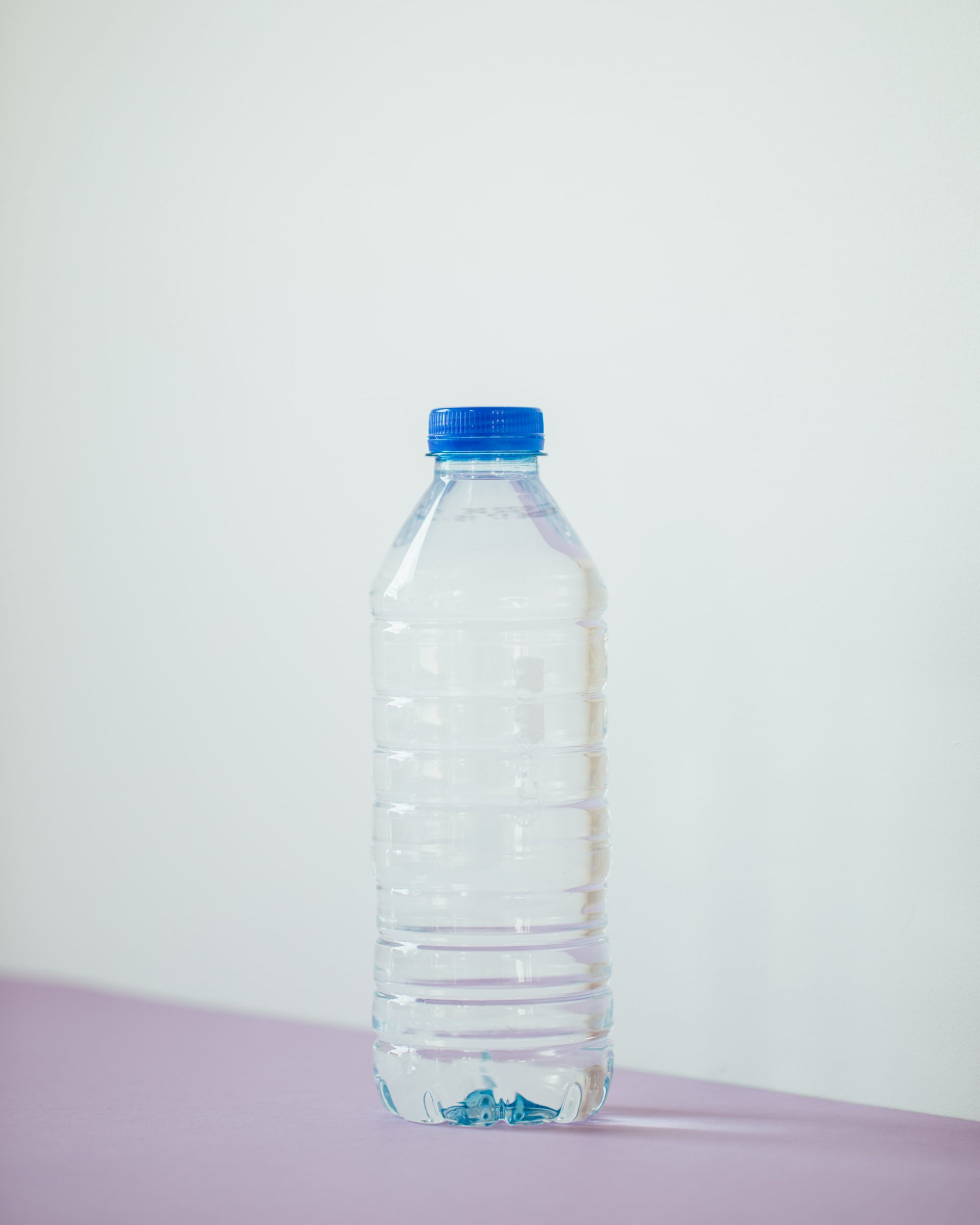
Around 80% of plastic bottles never get recycled so this is a great way to get innovative and reuse those plastic bottles for something new.
Have you ever wondered what happens to your food waste? In this post, we’ll be telling you about the process of anaerobic digestion and explain how your food waste can be used to power and heat your own home.
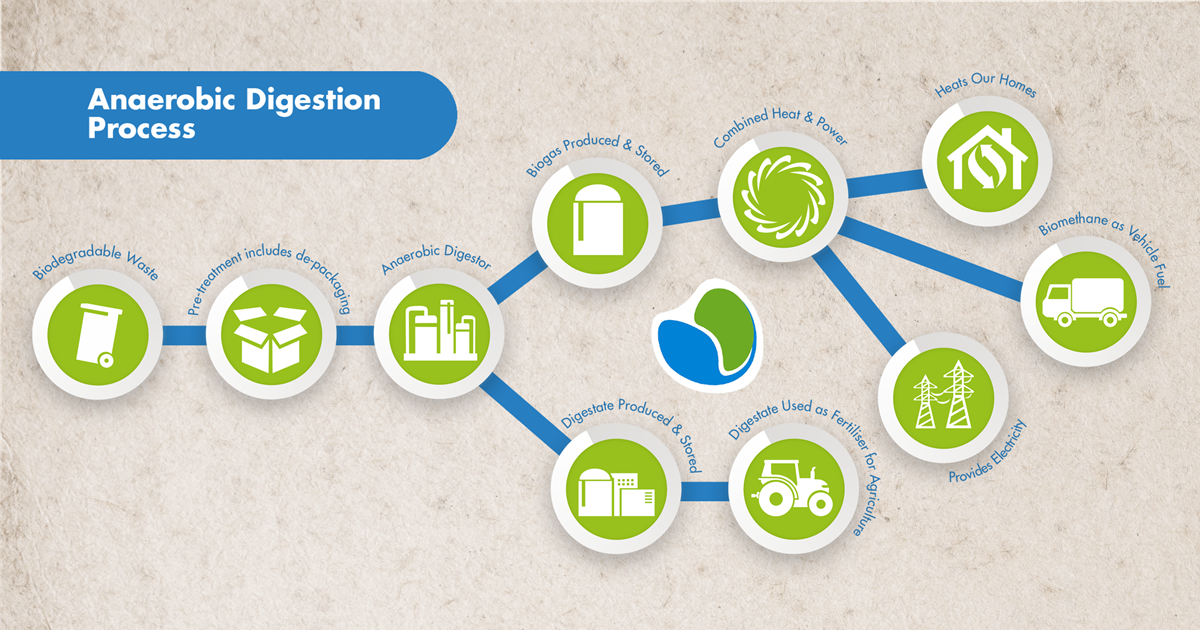
Stage 1: Food Processing
First, after collecting your food waste, it is transported and macerated into a pulp which is then heated to 70°C to kill all the pathogens.
Stage 2: Anaerobic Digestion
The pulp is pumped into large tanks (called digesters) which contain cultures of anaerobic bacteria. These bacteria digest the waste over approximately 55 days.
Stage 3: The Production of Biogas
The process of anaerobic digestion produces biogas which is 60% methane and 40% carbon dioxide. This is ready to be used as liquid bio-fertiliser.
Stage 4: Energy Production
The energy stored in the biogas is converted into electricity and heat, and biomethane which is used as vehicle fuel.
Stage 5: Circular Economy
Therefore, your food waste can be used as fertiliser, vehicle fuel and used to heat and power your own homes.
And there you have it! I hope this will encourage you to collect your food waste, and if you ever need a food waste bin and collection service, feel free to contact us at home@binituk.com or phone us on 01392 247035
[All information from Andigestion]
Have you got any garden waste or natural materials lying around? Well here is how you can create a perfect hideaway for ladybirds, woodlice, bees, frogs and even hedgehogs.

[All information is from RSPB (The Royal Society for the Protection of Birds)]
step 1: choose a suitable site
Make sure that you have a level and solid ground to build your bug hotel on. A good base for your hotel is something like a wooden pallet and placing old bricks on the corners can give extra stability. Make sure to leave gaps for the creatures to move through.
step 2: fill in the gaps
You can use all sorts of natural materials to make tunnels and beds for creatures, such as:
step 3: add a ‘roof’
It’s a good idea to put a roof of some kind on top of your hotel to make sure it’s kept dry and can shelter some of the creatures. This could be some old roof tiles. RSPB suggest that you can put some wildflower seeds around the hotel to feed the butterflies and bees.
If you try to build a bug hotel then make sure to tag us on social media @binituk!
With Net-Zero deadlines rapidly approaching, here are some quick tips to cut your emissions. You can either do these at home or at work.
Remember it’s the gradual changes that lead to long-term reward. You don’t have to change overnight but being mindful in your day to day can make the biggest difference. It may not feel like you’re helping much (a small fish in a big ocean) but even clearing your emails can save 0.3 grams of carbon dioxide per message. Now imagine how much you’d save by clearing your spam emails.
These are only quick tips and we advise you to research more when you can. This website is a great place to start. https://energysavingtrust.org.uk/top-tips-to-reduce-your-carbon-emissions/
If you’re from the South West area and want a local solution to your waste management. Why not give us a message https://binituk.com/contact/
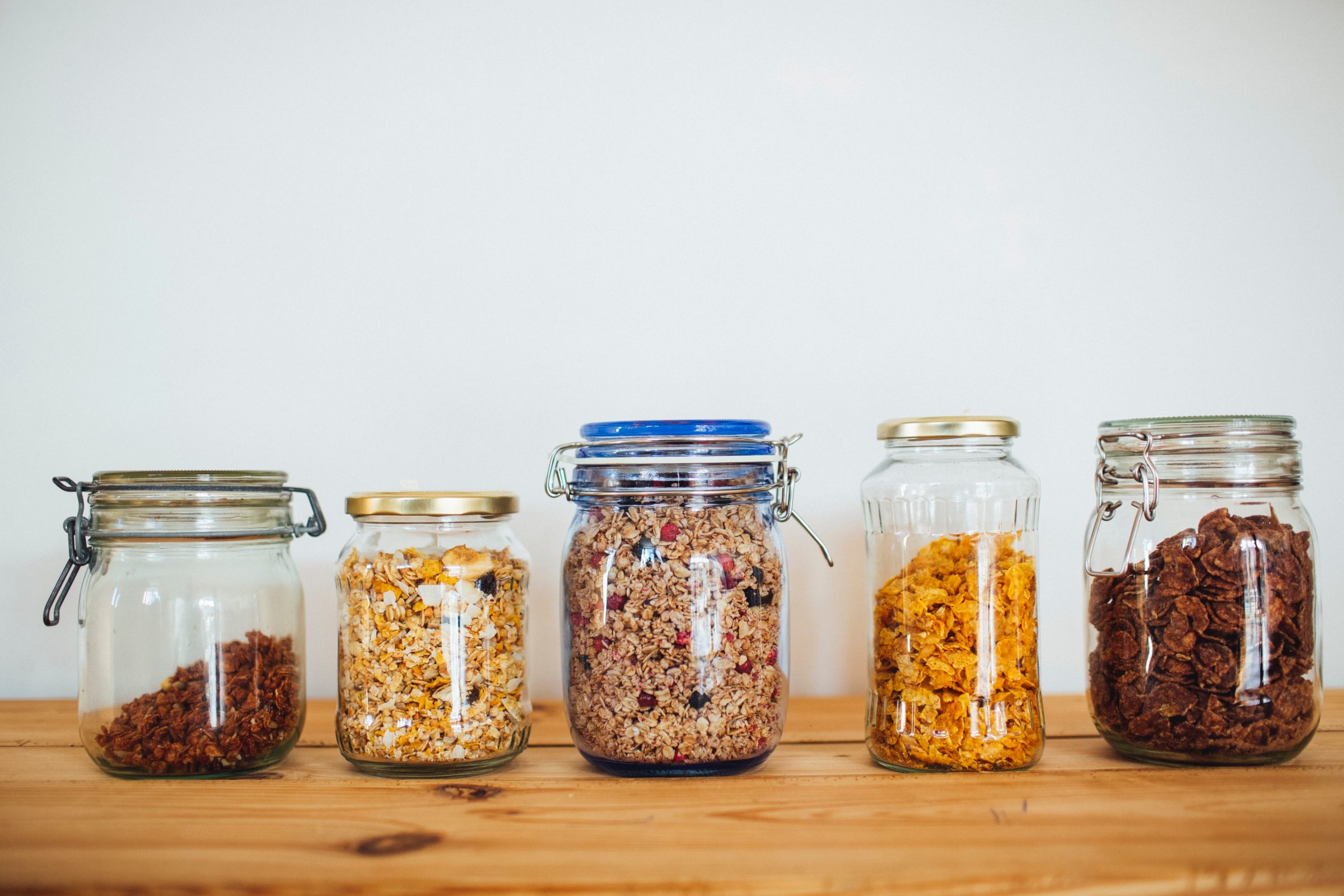
Here at Binit we are hands on with our bins. This means from the moment of collection we know exactly where your waste will end up – whether that’s recycled back into the market or even used as manure for our cow farmers at Langage farms. Whichever way the waste is taken, we try our best for it to be disposed of locally and as sustainably as possible. We even visit these sites to ensure our promise. However, with the ominously nearing NetZero deadlines and emissions targets approaching, the media has flourished with the “be green” approach. Why can this actually be backtracking on our climate progress? Because not all of these claims by brands turning green promote climate sustainability at all but are rather just a marketing strategy to drive sales.
Firstly, spotting a company who is “Greenwashing” is a great way to start. When evaluating whether you want to buy a product from a company, think about a few things first.
It is very easy for companies and brands to make extravagant claims on how and why they are sustainable but a lot of the time don’t have the evidence to back it up. Watching out for related certifications, awards or prizes is an easy way to spot if a company is making environmental choices.
If the words used to describe a product are vague, such as “eco-friendly” or “non-toxic”, be aware that the company may be using these generalised terms to reel you in and the terms may not imply the entirety of the product.
Lastly, the packaging can be an easy eye-spotter to whether a company is environmentally conscious. Has the packaging been designed so it can be recycled and if so is it clear? If not, the company may not be taking those extra steps to think about their waste impact post purchase.
The best way to help now is simply avoiding these companies once you have spotted them. Even more so, you can report them to the Advertising Standards Authority which can help lead to the false advertisement being taken down. And, as always, consume less.
I decided to do my year 11 work experience at Binit after hearing how much they value helping the environment but I still had no idea what to expect when I walked through the door. I was pleasantly surprised when I was met by a small but very helpful group of people who guided me through my 1 week experience.
On the first day I was shown around the Science Park building by my boss Philippa (the co-founder of the company) who then went on to explain her business to me in more depth. I quickly learnt how Binit reduces the impact of waste on the environment and was then guided on their outbound sales processes, I even made a list! I really enjoyed my first day and was excited to come back tomorrow. Tuesday was a lot more active as I joined Philippa in a few meetings and learned more information about the ins and outs of Binit. After that I got the opportunity to try out some marketing for Binit on their Instagram and ended the day on a teams call looking over some data. Wednesday started by updating some information on existing customers however, after listening to Sara answer a few calls to customers I was encouraged to try doing some customer service myself and despite being a bit nervous on the first call it quickly became a lot of fun.
On Thursday I was invited to come and watch Sara in a few sales meetings, we took the bus into Exeter and I learnt what sort of preparations were needed and what kind of questions would be asked. We then went on to visit The Cheeky Vegan who are a customer of Binit and I enjoyed a vegan milkshake and despite not even being a vegetarian I found it surprisingly tasty. On my final day I got to the office early so I could make it to a meeting with Philippa and Ethan and even though I had been to a few meetings before this was by far the most professional and I watched as many questions were asked from both sides and got to know how to answer them. Finally, I had a relaxing end to the week and helped myself to some brownies which were brought into the office.
I loved my week here and learnt a lot of new skills which I’m sure will become useful in the future and am thankful for every member of the team who made this whole experience a lot more enjoyable as there was always someone among us who had something interesting to say.
Last August, we spoke with Greenkode, a hi-tech company based in Cornwall, working to reduce food waste in the hospitality sector. In their podcast Zero Waste Kode, Episode 31: Sustainable Carbon Emission, our CEO and co-founder Philippa spoke about her experience of 20 years in the waste sector.
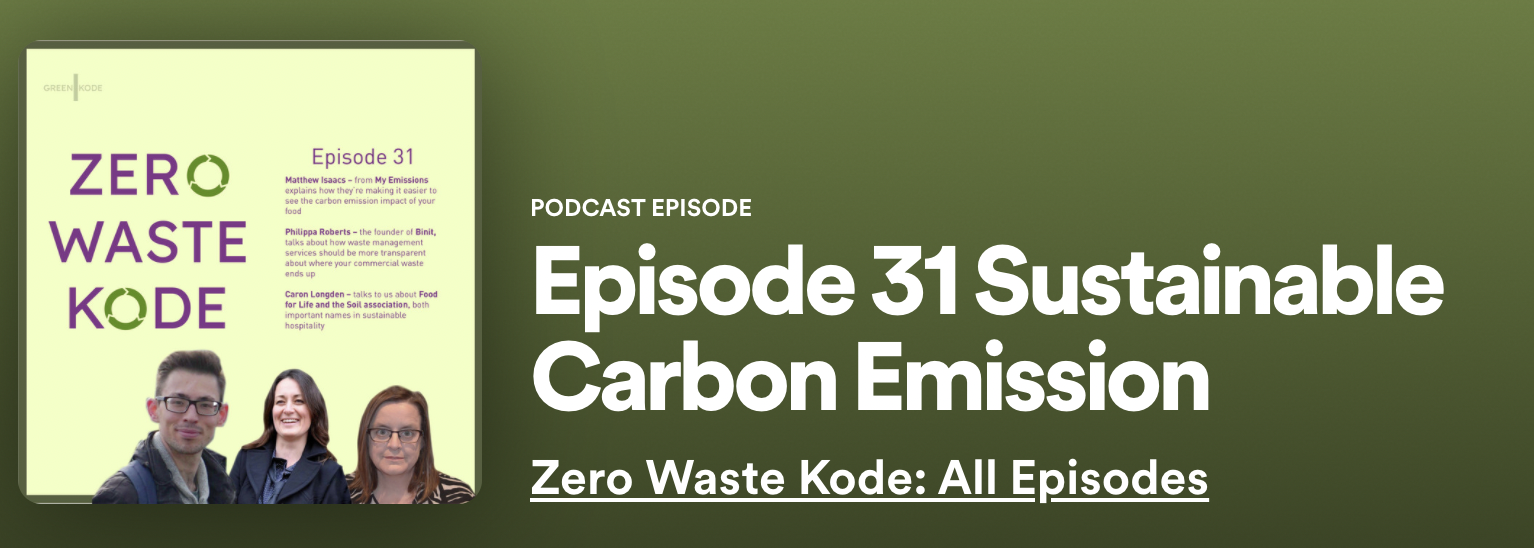
In the podcast episode, Philippa explains that Binit UK has evolved from aiming to reduce the amount of street litter that ends up in the sea to now trying to support the circular economy model through reimagining what we can do with our waste. For instance, the food waste that is collected from our bins is transported to an anaerobic digestion plant and converted into energy that can be used to heat and power our homes.
Binit has come so far in creating initiatives with particular customers to work on their specific waste issues, such as too much food waste, or not enough recycling and segregation occurring within their organisation. Philippa raises the point of encouraging businesses to use substitutes for e.g. plastic material in their daily routine at work.
To find out more, you can access the podcast on Spotify, Apple and Google Podcasts here.
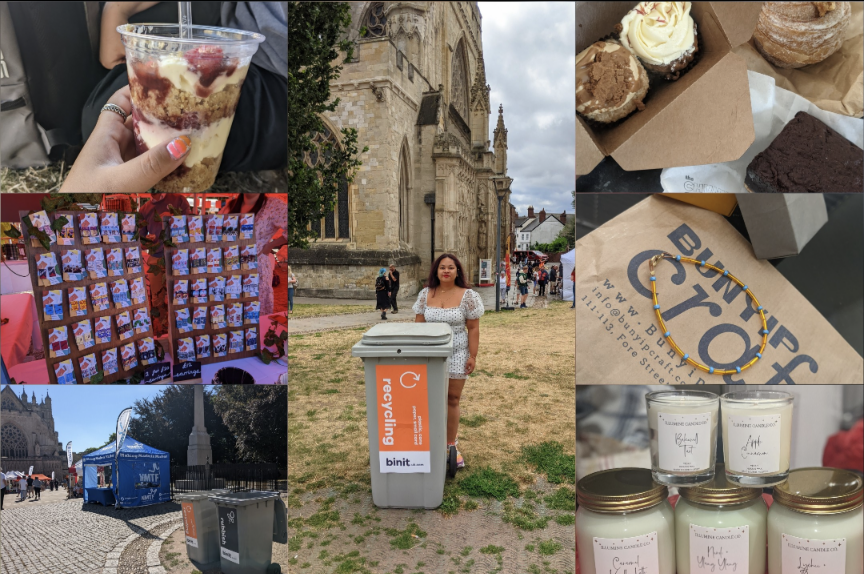

I’ve always enjoyed browsing and purchasing trinkets. (Who doesn’t?!) One of my favourite places to browse and discover new independent businesses are through the markets hosted and supported by the InExeter BID. I’ve been to their Fore Street Flea Market, South Street Spring Green Festival, Independent Traders Market and Young Traders Market. Their Indoor Market is still on my list of one to go to!
The first market I attended was the Fore Street Flea Market back in November 2021. From then on, I have purchased many a candle from Illumine Candle Co. which I discovered at their stall at the market. (My favourites are Bakewell Tart and Caramel Vanilla Latte). Since that market, I’ve always looked out for others that they’ve put on. Before visiting the Young Traders Market last week, I made a pit stop on Fore Street to grab a giant pain au chocolat and peanut butter raspberry danish from Truffle Hounds whom I discovered at the Independent Traders Market the week before that.
I’ve been trying my best to support local businesses where I can because their products are typically good quality and made with love. Through the markets I’ve been to, I’ve eaten great food and drink from the likes of Curious Kombucha, Truffle Hounds, The Chunky Cookie Co, The Wildflour Bakery, and Bangin Bakes; purchased jewellery from Bunyip Craft; self care items from Book on a Hook, Kilimanjaro Candles and Somerset Natural Living; a pottery mug from Gary Shaw, (the list is probably endless so I’ll stop there). On days that I keep it pocket-friendly (and have tried my best to not purchase anything), the markets are just a great reason to get out of the house.
Keep an eye out for markets through social media: the next one is the Indoor Market on Saturday, 13/08/22 at Positive Light Projects!